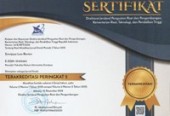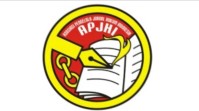Constitutional Rules on Waqf and Fiscal Policy Outcomes
DOI:
https://doi.org/10.28946/slrev.Vol5.Iss2.1169.pp262-272Keywords:
Constitutional Rules, Fiscal Policy, Govern-ment Revenue, Legisla-tures, Organization of Islamic Countries, WaqfAbstract
Fiscal policy, inter alia, looks at the list of government revenues. The constitutional rules provide guidance on the list of revenues. However, the previous studies find that waqf is not considered as part of government revenues. In this study, we argue that waqf brings in a new list of government revenues. To prove this point, we select a sample of fifty-seven countries under the Organization of Islamic Countries. The constitution of each country is investigated by using content analysis. The study uses a combination of several keywords, namely “tax or taxes or fiscal obligations,†“revenues or budget or finance†and “waqf†in investigating the rules on revenues and waqf. The findings in this study are classified into five kinds of countries, namely countries that highlight government revenue and waqf in the constitution, countries that claim to recognize sharia law as the basis of the law but the waqf rules in the constitution are missing, countries that mention in their constitution that government revenues are placed under the government system, financial system, and parliament, countries that place waqf is ruled under the public finance matter, and countries that place waqf as the main policy. This finding implies that the constitutional rules lead to the view that waqf is a part of public finance that can be used as a fiscal policy tool and should be included in the state budget plan.Downloads
References
Abbasi, Muhammad Zubair. “The Classical Islamic Law of Waqf : A Concise Introduction.†Arab Law Quarterly 26, no. 2 (2012): 121–53.
Adil, Masudul Hasan. “Wagner’s Hypothesis: An Empirical Verification.†IIM Kozhikode Society & Management Review 6, no. 1 (2017): 1–12.
Ambrose, Azni Hartini Azrai Zaimi, Mohamed Aslam Gulam Hassan, and Hanira Hanafi. “A Proposed Model for Waqf Financing Public Goods and Mixed Public Goods in Malaysia.†International Journal of Islamic and Middle Eastern Finance and Management 11, no. 3 (2018): 395–415. https://doi.org/10.1108/IMEFM-01-2017-0001.
Angelopoulos, Konstantinos, James Malley, and Apostolis Philippopoulos. “Tax Structure, Growth, and Welfare in the UK.†Oxford Economic Papers 64, no. 2 (2012): 237–58.
Chang, Tsangyao, and Gengnan Chiang. “Revisiting the Government Revenue-Expenditure Nexus: Evidence from 15 OECD Countries Based on the Panel Data Approach.†Czech Journal of Economics and Finance (Finance a Uver) 59, no. 2 (2009): 165–72.
Cordes, Joseph, Jon Hakken, and Rosemarie Nielsen. “Consumption Vs. Income Taxes: What Are The Comparative Advantages?†Proceedings of the Annual Conference on Taxation Held under the Auspices of the National Tax Association-Tax Institute of America 83, no. 105–109 (1990).
Egidy, Stefanie. “Proportionality and Procedure of Monetary Policy-Making.†International Journal of Constitutional Law 19, no. 1 (2021): 285–308.
Fiseha, Assefa. “Federalism, Development and The Changing Political Dynamics in Ethiopia.†International Journal of Constitutional Law 17, no. 1 (2019): 151–76.
Hall, Hubert. “The Sources for the History of Sir Robert Walpole’s Financial Administration.†Transactions of the Royal Historical Society 4 (1910): 33–45. https://doi.org/https://doi.org/10.2307/3678383.
Hoexter, Miriam. “Waqf Studies in the Twentieth Century: The State of the Art.†Journal of the Economic and Social History of the Orient 41, no. 4 (1998): 474–75.
Ismail, Abdul Ghafar, Muhammad Hasbi Zaenal, and Muhammad Hakimi Mohd Shafia. Philanthrophy in Islam: A Promise to Welfare Economics System. Islamic Research and Training Institute, 2014.
Lizzeri, Alessandro, and Nicola Persico. “The Provision of Public Goods under Alternative Electoral Incentives.†American Economic Review 91, no. 1 (2001): 225–39.
Milesi-Ferretti, Gian Maria, Roberto Perotti, and Massimo Rostagno. “Electoral Systems and Public Spending.†The Quarterly Journal of Economics 117, no. 2 (2002): 609–57.
Persson, T., and G. Tabellini. Political Economics: Explaining Economic Policy. Cambridge: MIT Press, 2000.
Rosoiu, Iulia. “The Impact of the Government Revenues and Expenditures on the Economic Growth.†Procedia Econimics and Finance 32 (2015): 526–33.
Stiglitz, Joseph E. “Chapter 15 Pareto Efficient and Optimal Taxation and the New New Welfare Economics.†Handbook of Public Economics 2 (1987): 991–1042. https://doi.org/https://doi.org/10.1016/S1573-4420(87)80010-1.
Tanzi, Vito, and Howell Zee. “Tax Policy for Developing Countries.†IMF Economic Issues 27 (2001).
Vatavu, Sorana, Oana Ramona Lobont, Petru Stefea, and Daniel Brindescu Olariu. “How Taxes Relate to Potential Welfare Gain and Appreciable Economic Growth.†Sustainability 11, no. 15 (2019): 4094.
Warren, Alvin. “Would a Consumption Tax Be Fairer Than an Income Tax?†The Yale Law Journal 89, no. 6 (1980): 1081. https://doi.org/https://doi.org/10.2307/796024.
Wu, Shih Ying, Jenn Hong Tang, and Eric S. Lin. “The Impact of Government Expenditure on Economic Growth: How Sensitive to the Level of Development?†Journal of Policy Modeling 32, no. 6 (2010): 804–17.















